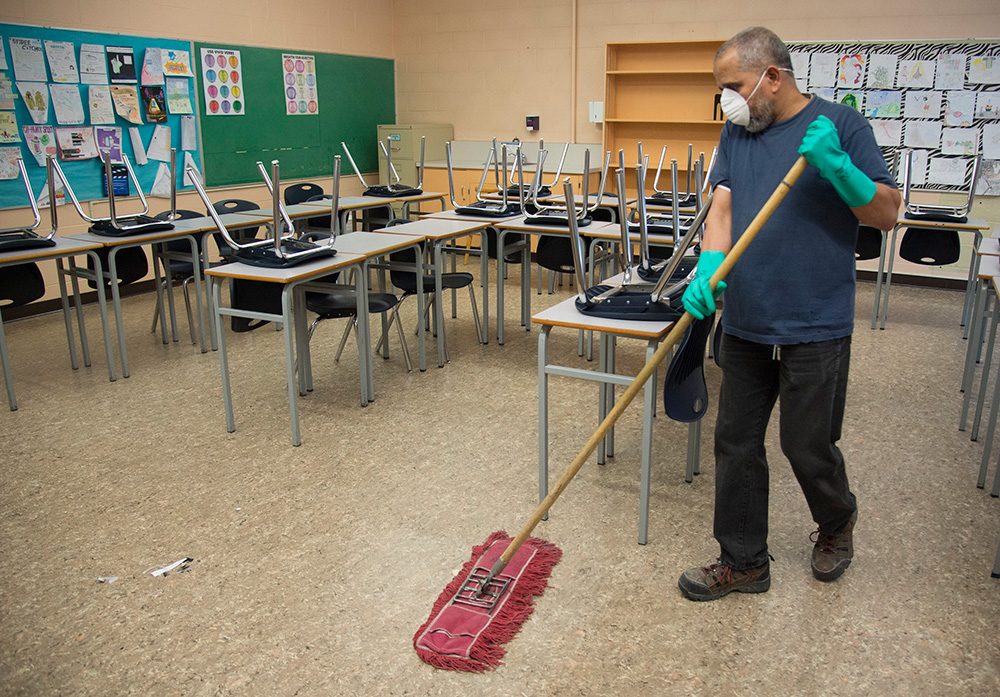B.C.’s back-to-school plan offers handwashing instead of the safe and transformative restart that our kids deserve.
The root of the problem is that the government assumes it can address the challenges at the intersection of COVID-19 and education by spending only about $2.50 per student (the price of a cup of coffee) per week — or $46 million over the year for about 500,000 kids.
In short, the government funding will pay for clean hands, clean surfaces and not much else. Even the Ontario conservative government is spending more than twice as much per student on COVID-19 adaptations — on top of Ontario’s head start in already investing 20 per cent more per student than B.C.
Teacher Dave McCristall — president of Computer Using Educators of British Columbia, an organization of B.C. educators at the cutting edge of using digital technology in schools — joined a government back-to-school working group. But his frustration with the outcome, shared on Twitter, is telling.
“As one of 25, I can say that having the opportunity to present ideas and feedback does not mean being listened to or having action come from your suggestions, knowledge, expertise or needs,” he wrote. “BCEd needs resources, physical distancing, masks and better HVAC [heating, ventilation and air conditioning], not just a seat.”
The government’s actions fall well short of what’s needed and even well short of what conservative governments in provinces like Ontario are doing.
While teachers and districts have excellent ideas about how to improve the safety and effectiveness of schools this fall, their hands are tied. If districts want to fund those ideas, they will have to take resources away from already stretched areas like inclusion support, building maintenance and IT services.
More fundamentally, parents have not been given reasonable options even if their kids face higher risks from exposure. It’s either follow the plan, or you’re on your own with home schooling or distributed learning.
If parents do opt for greater safety, district enrolment drops, and provincial funding is reduced. Superintendents could end up looking to lay off teachers in the face of funding shortfalls.
This is exactly the opposite of what we should be doing. We need to recognize that reducing class size means more teachers, more spaces for learning and greater support for the diversity of kids.
For too long we have relied on teachers to simply “get it done.” And they have. They have put up with crumbling schools. They have put up with overcrowded schools. They have ensured that kids with needs get help.
They have been so good at covering up for our government’s lack of support that we haven’t noticed how much support they need. They need us to do more than bang pots. They need our help.
So what can be done? As part of my candidacy for leader of the BC Green Party, I’ve been working with teachers to understand this problem and its solutions. Here are five ways to relieve stress on teachers:
1. Ensure funding is maintained, even if enrolment varies over the year. Don’t force school district leadership to make plans that balance the financial risks against the risks posed by COVID-19. Let the leaders focus on the big problem.
2. Use available space and encourage outdoor learning. Let’s convert hotels and community centres into classroom spaces this year so that more social distancing is possible and municipal and hospitality sectors have some support for their operations. Critically, let’s have more outdoor learning and place-based learning.
3. Fund mental health and inclusion. Let’s recognize that mental health remains a big issue among kids. We should hire additional counsellors to support kids and families and provide sufficient education assistants to ensure that they are not interacting with too many kids.
4. Give districts targeted funding to let them identify and address the most important needs for their students. This could include increased technology support, better air quality in schools, smaller class sizes or better options for parents and teachers who aren’t yet ready to come to school in person but don’t want to be pushed out of their school community.
5. Support teachers as they work to maintain public health standards. To meet the cohort requirements set out by public health officials, teachers will often find themselves teaching new classes this year and all teachers will face new constraints on how they can teach. This redesign will take time. Government should create teams of educators and professionals to create model courses and provide teachers with additional prep time each week to help spread the load.
Of course, this would take more than $46 million. But that $46 million is less than one per cent of the more than $5 billion B.C. is spending on COVID-19 relief. Our children deserve more.
B.C. already spends less than the national average on education, so this is our chance to catch up. Let’s make an ambitious investment that provides durable resources for teachers going forward and provides peace of mind to parents today.
Let’s take this opportunity to restart our approach to education, ensure kids are safe and secure a strong publicly funded system into the future. ![]()
Read more: Education, Coronavirus, BC Politics
















Tyee Commenting Guidelines
Comments that violate guidelines risk being deleted, and violations may result in a temporary or permanent user ban. Maintain the spirit of good conversation to stay in the discussion.
*Please note The Tyee is not a forum for spreading misinformation about COVID-19, denying its existence or minimizing its risk to public health.
Do:
Do not: